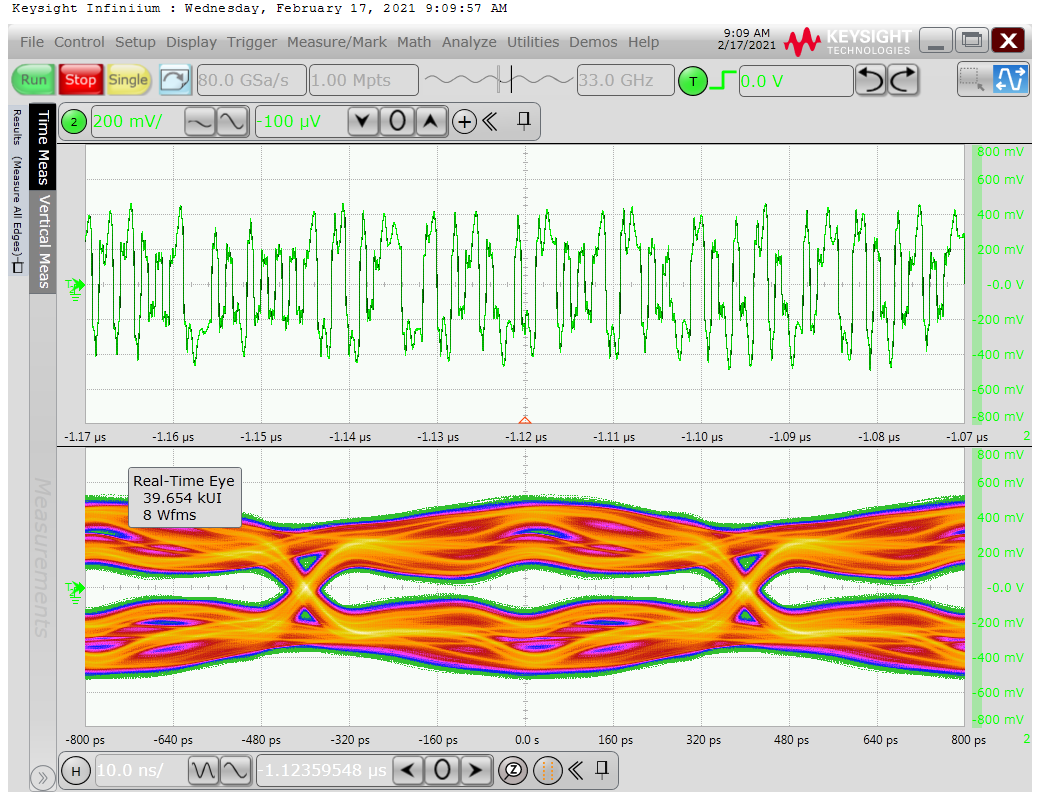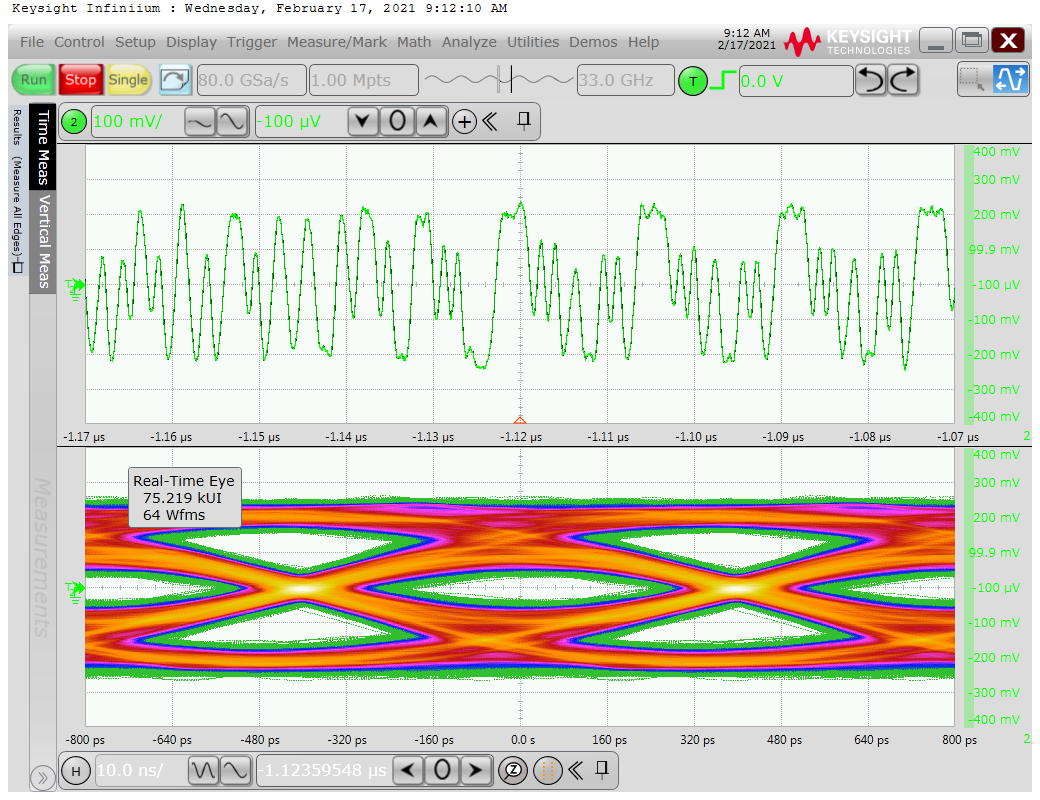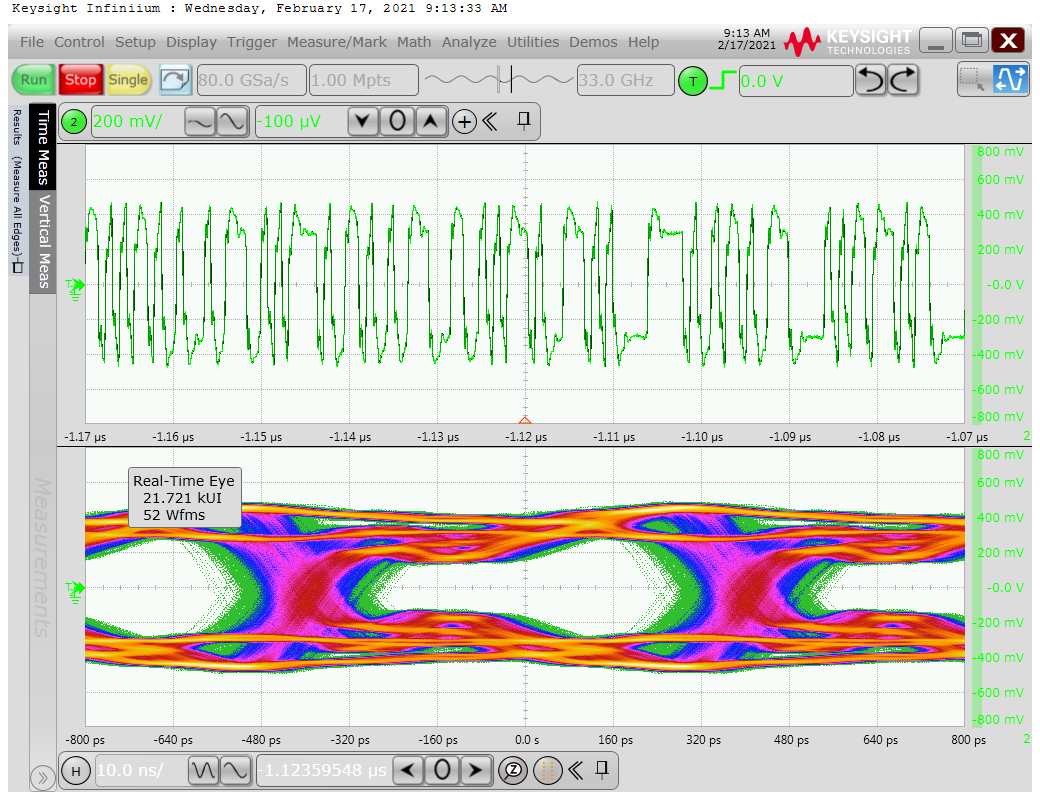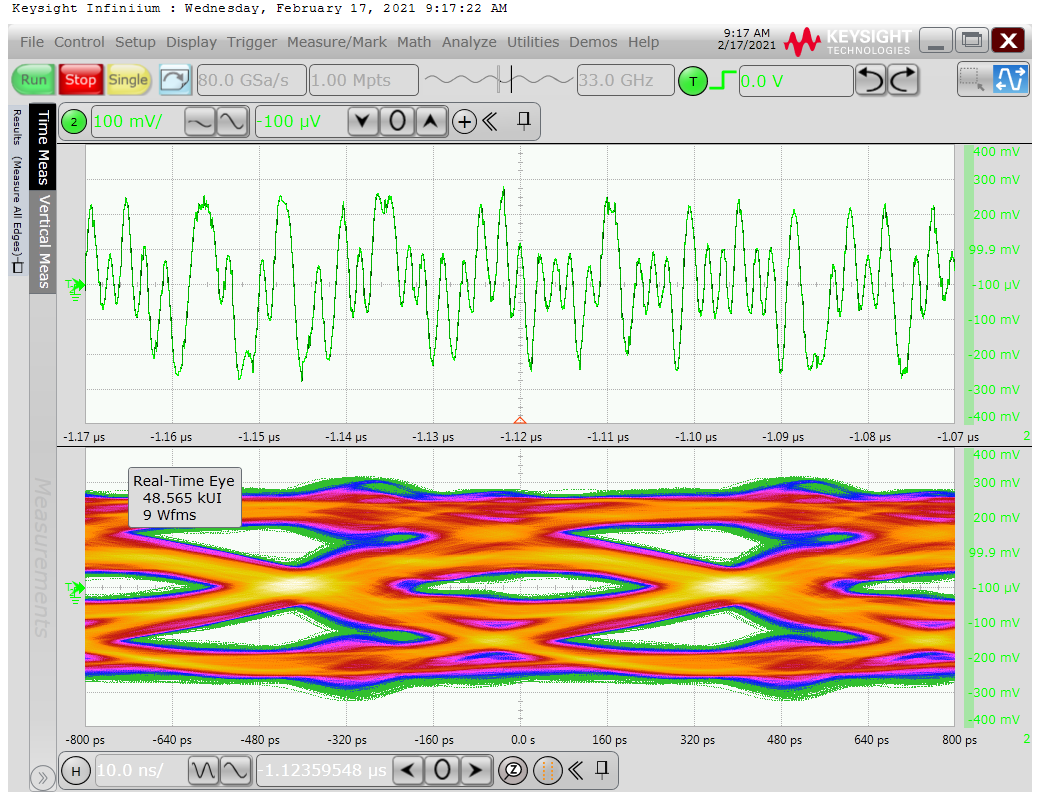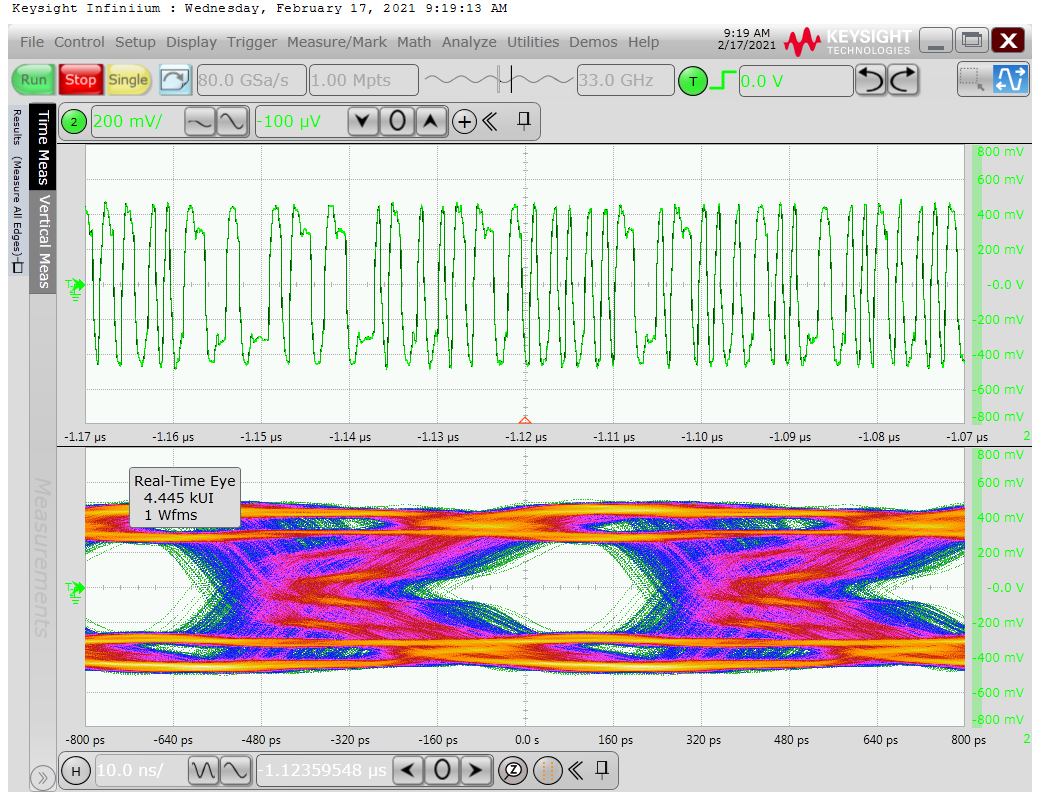Other Parts Discussed in Thread: DS25BR100, , DS25BR400, DS25BR110
Hello
we have designed an evaluation board which connects two devices using a 1.25Gbps link over 1m twisted pair cable (sgmii 8b10b).
The first device generates test packets which are looped back in the second device and then the first device examines the received information for any bit/byte errors. We use a CAT7 patch cable and both links run over separate pairs (unidirectional).
The connections look as follows (FPGA1 and FPGA2 are of the same chip type meaning there is no difference in the LVDS interface, "MP" designates Measurement Point descrption below):
Link1: FPGA1(LVDS) -> DS25BR100 (MP1) -> 1m twisted pair -> (MP2) DS25BR100 (MP3) -> FPGA2(LVDS)
Link2: FPGA2(LVDS) -> DS25BR440 (MP4) -> 1m twisted pair -> (MP5) DS25BR440 (MP6) -> FPGA1(LVDS)
We are interested in the DS25BR400 because the end product requires four independent 1.25 Gbps links and we would like to use a single chip solution instead of 4x DS25BR100.
Now the actual problem:
Our test results show that link 1 seems to work as expected (stable link, no bit/byte errors) but link 2 suffers extensive issues (link breaks up and/or bit/byte errors). We have measured the eye diagrams at certain points in the system and see that the DS25BR440 output to the FPGA1 is distorted (I have attached some plots, the image numbers correspond to the measurement points (short MP) in the connection description above). As "distortion" is meant the degraded signal quality between (MP3) and (MP6).
For this reason we would like to know what is the difference between the two chips and what could be the source of the signal distortion that we are seeing. Our target link length is 5 meter and I wonder if the DS25BR440 is capable of reaching this?
Figure 1 in the DS25BR100 datasheet (SNLS217F) plots the achievable data rate over a cable length and I wonder why such an image is missing in the DS25BR440 datasheet (SNLS258B)? Why is that so?
Can the DS25BR440 be seen as 4x DS25BR100 or do they have different internal structure/data processing/capabilities?
Regards
Valentin
Measurement point 1:
Measurement point 2:
Measurement point 3:
Measurement point 4:
Measurement point 5:
Measurement point 6:


